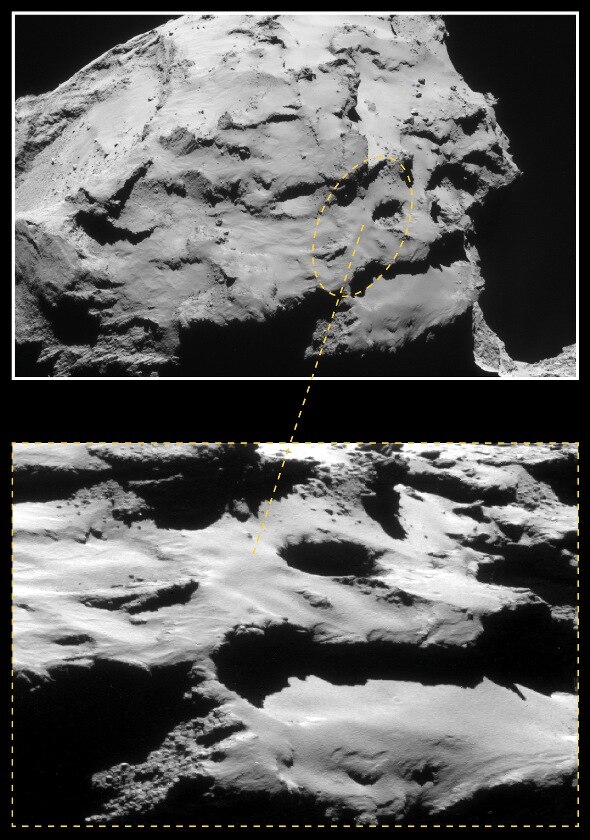Create a free profile to get unlimited access to exclusive videos, sweepstakes, and more!
Rosetta’s Final Resting Place Has Been Chosen

In August 2014, the space mission Rosetta rendezvoused with the four-kilometer-long comet 67P/Churyumov-Gerasimenko, and made history. It was the first spacecraft ever to orbit a comet, and the first to send a probe to the surface. It has returned thousands of images of the double-lobed comet to Earth, and given scientists enough data to spend a lifetime examining.
But it’s also time for the mission to come to an end.
Over the past few weeks the orbiter’s trajectory has been changed, bringing it down ever closer to the surface. On Sept. 29, when it’s just a few kilometers away, the orbiter will execute a “collision maneuver,” sending it down to the surface. On Sept. 30 it’ll make contact, and be switched off. The mission will be over.
It will take data all the way down, observing its strange partner for the past two years. And now the European Space Agency has released information about its final resting place: an area on the smaller lobe of the comet near the 130-meter-wide pit called Deir el-Medina, named after a city in Egypt that also has a wide pit nearby. On the comet, this is an active pit where ice sublimates (turns directly into a gas) when it’s heated by sunlight. Dust blows out along with water vapor, creating the fuzzy head and long tail of the comet when it nears the Sun.
Rosetta should touch down pretty close to the pit. Hopefully it will see inside the pit, down into the layers eroded away by countless passes around the Sun. There are also blobby structures nearby that may be “cometesimals,” small snowballs from the early solar system that came together to form the comet. If they are, they’re among the oldest formations we’ve ever seen, close to 4.6 billion years old. Seeing them is like seeing a time capsule to when the planets were still forming.
Funny: An operations manager in the press release commented that the orbit of the probe is being affected by the comet’s gravity, changing the shape in ways difficult to predict. If the comet were a perfect sphere, its gravity would be easy to navigate. But the comet is shaped more like a squat, off-kilter bowling pin (oh, who am I kidding; it looks like a rubber duckie). Sometimes the small lobe is near the probe, sometimes the bigger one. That enough is sufficient to mess with Rosetta’s path, but the comet is also not homogeneous; it’s lumpy, and that means the strength of its gravity changes even more depending on the probe’s position.
So they’re being careful, edging the spacecraft ever-closer to the comet. I imagine the images we’ll be getting will be as amazing as anything we’ve seen so far—and so far they’ve been truly amazing—and only get better as the distance closes.
And on Sept. 30 … well, we’ll see. It’s been an amazing journey, but there’s still a little ways yet to go.


























